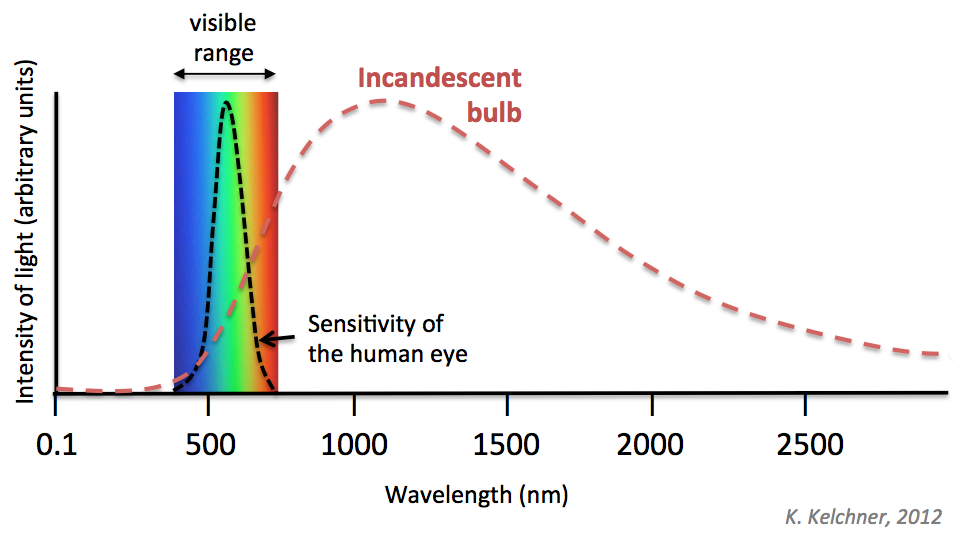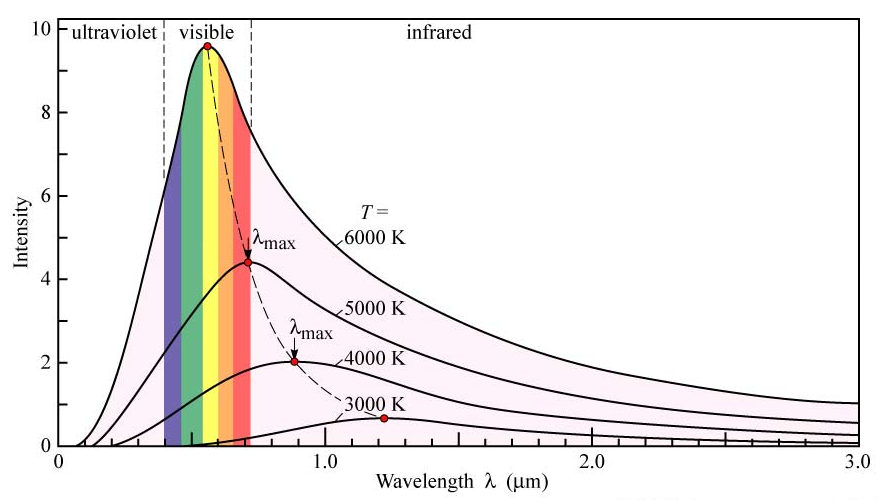Enough! Electro-optical engineer chimes in.
Enough of you guys arguing back and forth.
Here's what Wikipedia says about Halogen lamps:
Tungsten-halogen lamps (a tungsten incandescent bulb with some halogen gases in the envelope) are more efficient than plain tungsten incandescents, producing more luminescent output for the same watts because the filaments run hotter they output more visible light. The halogen gas allows them to run hotter without decreasing the life or increasing the watts.
To my knowledge altho some may be working on it there's no breakthrough in more efficient incandescents without halogen. Halogen increases the efficiency by about 28% (e.g. a 72W halogen produces light equivalent to an old 100W bulb.
Classic bulb Manufacturers are able to produce halogens with pretty much the same production lines, most of the process is the same except some halogen is introduced instead of a complete vacuum. Thus the big name makers are probably still GE, Phillips and Sylvania.
Halogens are still relatively cheap compared to LEDs when comparing purchase price. But for applications like... accent lighting with a dimmer lamp (where its on for long times but at low levels extending the life and using lower power), or closets, pantries and powder rooms (on infrequently for short periods of time) the halogens make a lot of sense. Even compared to CFLs which may take 30-seconds or a minute to reach brightness, they are not good for closets and pantries, Halogens can be effective with a little lower price, instant on and limited on time making energy use less important.
Halogens are incandescents. Halogens are legal to manufacture and sell. Halogens will be around until LEDs are cheap enough to complete for all applications.
Incandescents don't fllicker at 60 or 120 Hz. The reason is that the light output is created by the hot filament radiating. WHile the current in the filament goes to zero twice per cycle, the temperature of the filament would have to go to room temperature twice per cycle to make the output cycle at that rate. The filament has enough thermal mass that it won't cool down in 8 milliseconds to where its light output varies. Anyone who says they flicker visibly at 60Hz or 120Hz is dreaming.
Now your old flourescent tubes visibly flicker, that's because the ballasts operate from magnetic transformers that operate at line frequencies. THe bulbs emit based upon electric field and since the electric field goes from a zero ti a maximum to zero twice per cycle the light output is in and off at the same rate. The newer fuorescent fictures with electronic ballasts operate at much higher frequencies using electronic oscillators that are much faster than AC frequecies. Magnetics are more efficient, smaller and lighter at higher frequencies so the cost of the elecrtonics is offset. This the CFLs and new fixtures won't visibly flicker.
An incandescent bulb is an interesting electronic circuit element. It has non linear characteristics being that the resistance is near zero when cold but fairly large when hot with a steep R vs V characteristic. THis feature caused Bill Hewlett and Bob Packard to use it as an amplitude feedback control element in the first HP instrument they manufactured, a signal generator.
Incubators, IR heaters, etc use them for their heat output which they are quite efficient, making about 99 watts of heat for every electrical watt put in.
So there are uses for specialty incandescents.
Finally there's a disagreement over "banned" which is mostly a disagreement of terminology.
One of you is saying that the incandescents are banned by law and the other is saying that incandescents are not banned but can't be made and the other is saying that is the same thing and so on. The facts are:
Incandescents are not banned by name or technology. e.g. the law does not say you can't make incandescents nor does it say you can't make bulbs with an evacuated bulb and a glowing tungsten filament.
The law bans the sale of light bulb technology which does not meet certain efficiency standards (in lumens per watt) and such standards were deliberately set to make old-type incandescents not pass but CFLs and the coming LED technology pass.
This effectively bans incandescents, unless they have a breakthrough which improves the technology. So incandescents are not banned by name, only by the performance they have (or don't have). Halogen incandescents are an example of technology improvement which allows the continued manufacture of incandescents. I imagine halogen technology was known before the law and it was lobbied to set the efficiency standard so that they could squeak through.
Enough of you guys arguing back and forth.
Here's what Wikipedia says about Halogen lamps:
A halogen lamp, also known as a tungsten halogen, quartz-halogen or quartz iodine lamp, is an incandescent lamp that has a small amount of a halogen such as iodine or bromine added. The combination of the halogen gas and the tungsten filament produces a halogen cycle chemical reaction which redeposits evaporated tungsten back onto the filament, increasing its life and maintaining the clarity of the envelope. Because of this, a halogen lamp can be operated at a higher temperature than a standard gas-filled lamp of similar power and operating life, producing light of a higher luminous efficacy and color temperature. The small size of halogen lamps permits their use in compact optical systems for projectors and illumination.
Tungsten-halogen lamps (a tungsten incandescent bulb with some halogen gases in the envelope) are more efficient than plain tungsten incandescents, producing more luminescent output for the same watts because the filaments run hotter they output more visible light. The halogen gas allows them to run hotter without decreasing the life or increasing the watts.
To my knowledge altho some may be working on it there's no breakthrough in more efficient incandescents without halogen. Halogen increases the efficiency by about 28% (e.g. a 72W halogen produces light equivalent to an old 100W bulb.
Classic bulb Manufacturers are able to produce halogens with pretty much the same production lines, most of the process is the same except some halogen is introduced instead of a complete vacuum. Thus the big name makers are probably still GE, Phillips and Sylvania.
Halogens are still relatively cheap compared to LEDs when comparing purchase price. But for applications like... accent lighting with a dimmer lamp (where its on for long times but at low levels extending the life and using lower power), or closets, pantries and powder rooms (on infrequently for short periods of time) the halogens make a lot of sense. Even compared to CFLs which may take 30-seconds or a minute to reach brightness, they are not good for closets and pantries, Halogens can be effective with a little lower price, instant on and limited on time making energy use less important.
Halogens are incandescents. Halogens are legal to manufacture and sell. Halogens will be around until LEDs are cheap enough to complete for all applications.
Incandescents don't fllicker at 60 or 120 Hz. The reason is that the light output is created by the hot filament radiating. WHile the current in the filament goes to zero twice per cycle, the temperature of the filament would have to go to room temperature twice per cycle to make the output cycle at that rate. The filament has enough thermal mass that it won't cool down in 8 milliseconds to where its light output varies. Anyone who says they flicker visibly at 60Hz or 120Hz is dreaming.
Now your old flourescent tubes visibly flicker, that's because the ballasts operate from magnetic transformers that operate at line frequencies. THe bulbs emit based upon electric field and since the electric field goes from a zero ti a maximum to zero twice per cycle the light output is in and off at the same rate. The newer fuorescent fictures with electronic ballasts operate at much higher frequencies using electronic oscillators that are much faster than AC frequecies. Magnetics are more efficient, smaller and lighter at higher frequencies so the cost of the elecrtonics is offset. This the CFLs and new fixtures won't visibly flicker.
An incandescent bulb is an interesting electronic circuit element. It has non linear characteristics being that the resistance is near zero when cold but fairly large when hot with a steep R vs V characteristic. THis feature caused Bill Hewlett and Bob Packard to use it as an amplitude feedback control element in the first HP instrument they manufactured, a signal generator.
Incubators, IR heaters, etc use them for their heat output which they are quite efficient, making about 99 watts of heat for every electrical watt put in.
So there are uses for specialty incandescents.
Finally there's a disagreement over "banned" which is mostly a disagreement of terminology.
One of you is saying that the incandescents are banned by law and the other is saying that incandescents are not banned but can't be made and the other is saying that is the same thing and so on. The facts are:
Incandescents are not banned by name or technology. e.g. the law does not say you can't make incandescents nor does it say you can't make bulbs with an evacuated bulb and a glowing tungsten filament.
The law bans the sale of light bulb technology which does not meet certain efficiency standards (in lumens per watt) and such standards were deliberately set to make old-type incandescents not pass but CFLs and the coming LED technology pass.
This effectively bans incandescents, unless they have a breakthrough which improves the technology. So incandescents are not banned by name, only by the performance they have (or don't have). Halogen incandescents are an example of technology improvement which allows the continued manufacture of incandescents. I imagine halogen technology was known before the law and it was lobbied to set the efficiency standard so that they could squeak through.

 LCHIEN
LCHIEN Loring in Katy, TX USA
Loring in Katy, TX USA




Comment